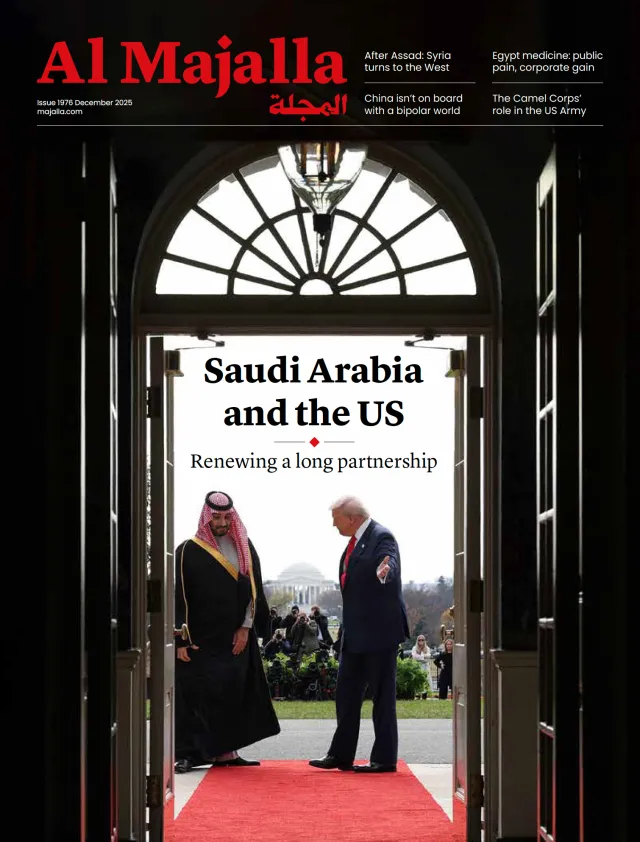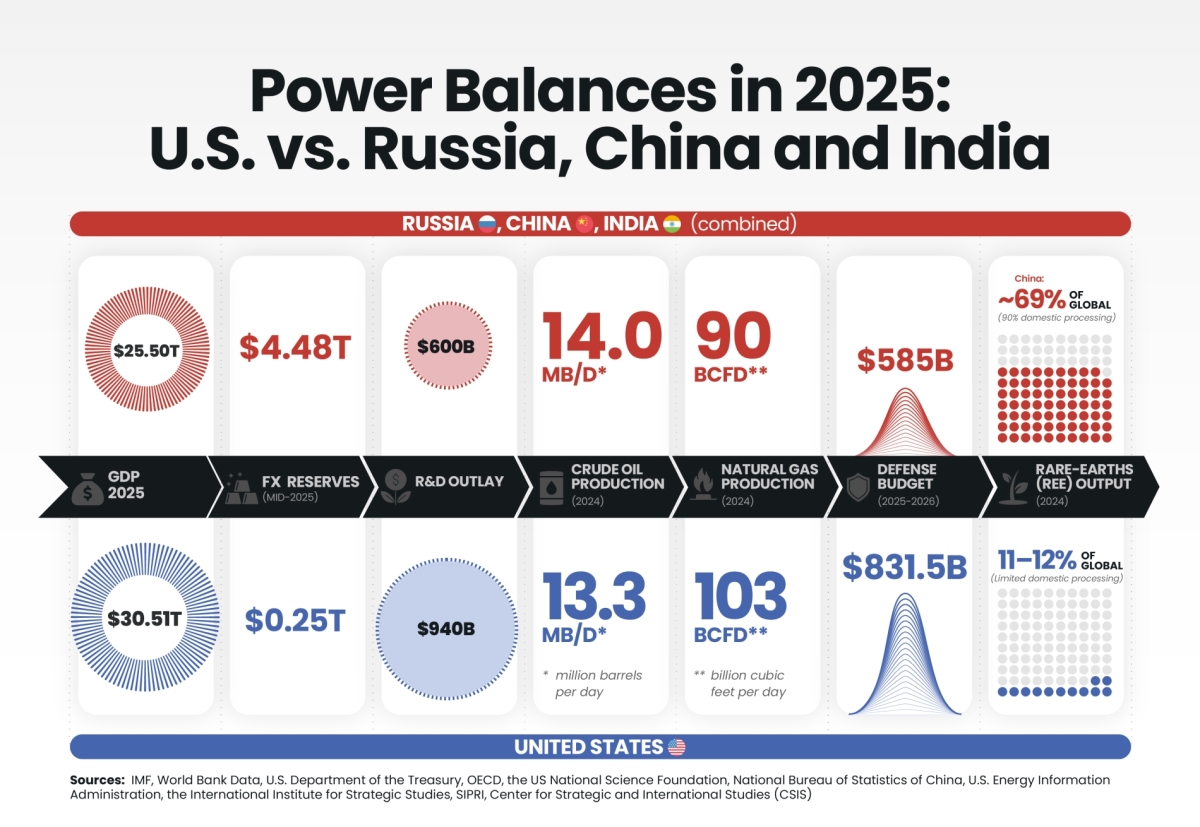The recent Shanghai Cooperation Organisation (SCO) summit in Tianjin, where Chinese President Xi Jinping, Russian President Vladimir Putin, and Indian Prime Minister Narendra Modi convened, signalled a subtle recalibration in global power dynamics. This optics-laden event bolstered the perception of an emerging rival bloc challenging US dominance.
According to 2025 estimates, the combined GDP of China, Russia, and India stands at $25.5tn—still smaller than America’s $30.5tn, but substantial enough to suggest momentum.
Military spending highlights asymmetry. The US defence budget of $831.5bn surpasses the combined $585bn of the three global heavyweights, and Washington’s network of alliances amplifies this edge. On innovation, America’s $940bn in R&D outlays nearly doubles the bloc’s $600bn, sustaining its lead in advanced technologies.
Yet in natural resources, China dominates the supply chains for rare earth minerals, producing approximately 70% of global production, highlighting the United States' reliance on exports of these strategic minerals.
Meanwhile, rankings still place the US ahead in multipolar influence, alliances, and resilience, though China narrows the gap in economic and diplomatic domains. Structural fissures, mainly India’s strategic autonomy, Sino-Indian border tensions, and the lack of binding military alliances, further mitigate the summit’s symbolic potency.









